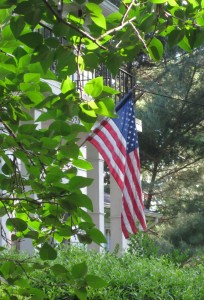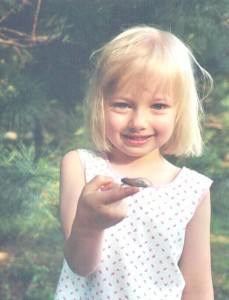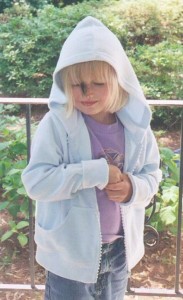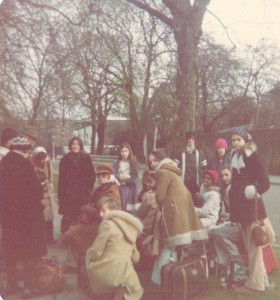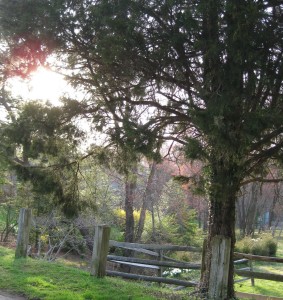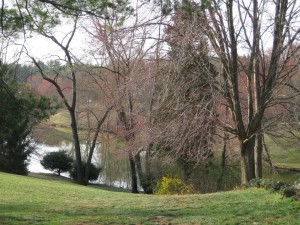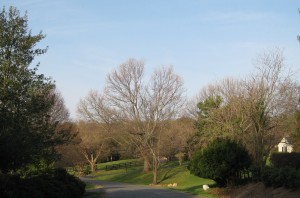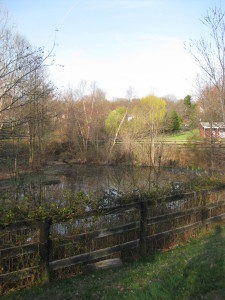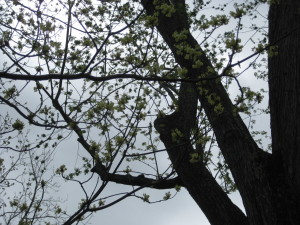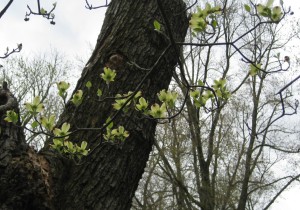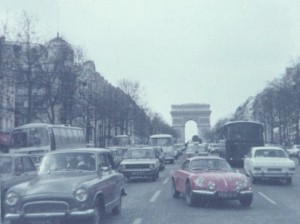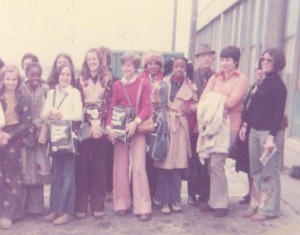Category Archives: Community
Kiko the Service Dog
Kiko will see you now.
As I’ve mentioned before, there may be nothing Kiko likes more than a ride in the car, followed by a walk. In cool weather he accompanies me on daily outings. Before I do my grocery shopping, get my allergy shot, or whatever, we walk. Afterwards, he waits contentedly in the car until I return, either keeping a look-out from the driver’s seat, or snoozing in the back. One day last week, we were cutting through the yard of the Sunrise, an assisted living facility, on our way to a nearby park. As we rounded a curve on the path, we met a couple pushing a sleepy looking elderly woman in a wheelchair. Upon spotting Kiko, she woke up. Oh, look!, she exclaimed. What a beautiful dog! I love dogs! Her companions were visibly cheered, as well; suddenly an unpromising walk had taken a decidedly more satisfying turn.
As I see it, Kiko regally assumes that everyone he encounters is there for the express purpose of an audience with him. He is a beneficent monarch, one who graciously and generously bestows the gift of his royal presence. Because he lacks any pressing matters of state, should no loyal subjects appear, he has the humility to lie down and await their certain arrival. That day at the Sunrise, no wait was required; homage was instant. After an initial greeting, Kiko sat calmly at the base of the wheelchair while the smiling Sunrise resident, her face twenty years younger now, petted and adored him.
You must bring him by again!, she urged. We used to have a dog named Shadow who lived here, and I miss him so much. Her son told me that Shadow was a big dog, a lab-pit bull mix. He had the run of the Sunrise until he began jumping on the residents, prompting an employee to adopt him. There was no longer a house dog, and Shadow had left an empty space.
That got me thinking. Could Kiko help fill that space? During high school and college, I had enjoyed visiting with nursing home residents on a weekly basis, but I hadn’t been able to bring my dog. On a cool sunny day the next week, when Kiko and I were going to the grocery, I decided to drop by the Sunrise with him. His welcome was warm and immediate, from staff and residents alike. An appreciative crowd gathered, with my little dog at its center.
I asked a staff member if dogs needed special training to visit; I had always assumed they did. My friend Celeste completed several obedience classes with her dog Beau to certify him as a nursing home therapy dog. Kiko passed his puppy class, but just barely, due to his headstrong on-leash behavior. We did not continue his formal education. Surprisingly, no special training for visiting dogs was required at this facility. To return on a regular basis, a dog needed only proof of vaccinations.
Several residents and staff mentioned that Miss Anne sure would like to see the dog. Did we have time for a room visit?
Of course! A caregiver escorted us upstairs, via the elevator, a first for Kiko, one that he took in easy-going stride.
When we arrived at the room, its occupant yelled loudly and gruffly for us to enter. The big voice belonged to a fragile little lady. Miss Anne was lying perfectly, alarmingly inert on her bed, and she appeared to be in no mood for guests. Until she saw Kiko, that is. Suddenly she was up and attempting to pop out of bed with such alacrity that I was afraid she would topple to the floor. The caregiver jumped in, luckily, to help her safely maneuver to the side of the bed. Kiko sat at her feet. He even gazed up at her with an expression that could be described as loving. Such a show of emotion is unusual for him.
After a while, Miss Anne asked me, Didn’t I see you out back before? It wasn’t until then that I realized this was the same woman Kiko and I had met earlier outside with her son and daughter-in-law. I’m sure she recognized Kiko, not me. How fitting it was that, by chance, we found our way back to her, just as she had hoped we would.
Our family sometimes jokes that Kiko would be the world’s worst guide dog. There is no amount of obedience training, no army of diligent, expert dog whisperers, that could ready him for the job that many labs, golden retrievers and German shepherds seem born to do. It’s not in him, and it’s not in his breed. But, like all dogs given the opportunity, all those we welcome into our lives with love, Kiko has a gift for brightening his little corner of the world. And now, with the relative maturity of his nearly six years, he has the unflappable, mellow temperament to bring special cheer to the Sunrise. How lucky it is that we met Miss Anne and her family that day! Kiko will be back next week to check in with his new friends.
Cicadas!
They’re coming. Cicadas, in extraordinary numbers, will soon be waking from their seventeen-year naps. Really? It hasn’t been seventeen years since they last overwhelmed our area. I know this for certain. An intense cicada season is not forgotten. Our daughter was five, nearly a preschool graduate. Time does fly, but she’s only fourteen now, not twenty-two.
We hear it’s likely that the DC area will see more cicadas than usual this year. Various broods hatch every seventeen years, and this year’s Brood II is not the one that deluged us here in Northern Virginia in 2004. Fairfax County lies on the outer limit of this coming brood, so we may not feel the impact as strongly as places farther south. We’ve heard from my husband’s brother that the big, lumbering insects have indeed been spotted in their neighborhood in Richmond. Our daughter’s young cousins have never been party to a cicada invasion. I hope they enjoy it as much as she did.
D has always had a soft spot for oddball creatures. I admire her ability to find beauty where many cannot see it. She took an immediate liking to H’s pet box turtle, with us since we married, and before that, with H since he was a boy. Speedy (H was twelve when he named it) lives in a spacious glass box in our basement. He dines on raw ground beef, blueberries, and now, thanks to Kiko, canned dog food. Occasionally he gets the run of the basement or one of our larger bathrooms. D maintains that Speedy is terribly cute, although few would agree. As a toddler, she befriended the numerous toads that make their home each spring in our yard. She named them and discussed their differentiating traits of appearance and personality–how she could distinguish Squeaky, say, from Emily. As I’ve mentioned in an earlier post, she loves all the bizarre aquatic life of Cape Cod bay, including the spider crabs and the slimy moon snails. See Our Summer Village on the Cape, September 2013.
D’s five-year old self welcomed the cicadas enthusiastically. She picked them up, but gently, carefully. She enjoyed letting them amble along her arms, even on her face; she often had one perched on her nose. She loved their segmented, transparent wings, red bulbous eyes, stick-like legs, and coal-black armored bodies. I agree that each full-fledged cicada is a majestic specimen, and I find their uncertain, drunken flight very endearing. But I don’t care much for the nymph stage, in which they first appear after their long gestation period. They tend to tunnel out of the ground in unsettling droves around dusk, each cicada leaving a perfectly round, approximately half-inch hole in the earth. D didn’t even mind the look of these initial wingless, moist, pale beige creatures. Unattractive, I would call them. Or better yet, just plain icky. D wasn’t put off by the discarded exoskeletons that clung to tree branches, reminding me of some dreaded dermatological condition, or the pile-up that accumulated around the bases of our old maples. She wasn’t bothered by the noise, a sound like the roar of a hundred generators and power mowers. And she wasn’t even offended by the smell of pervasive decay, rather like the scent of rotting shrimp, that marks the winding down of cicada season.
It will be interesting to see the scope of this coming invasion and how it affects us this time. Will it be really be an onslaught? Will D, at fourteen, be as eager to mix it up with the cicadas as she was nine years ago? And what about Kiko? While he thrills at the hunt for the single buzzing cicada in the grass, this will be his first major brood year. Will he try to gorge himself on the insects, as some dogs do? Considering his finicky nature and dainty habits, this seems unlikely.
The Cicada Clock is ticking. Recent mornings here have been unusually chilly, but surely spring-like weather will arrive before long. Will the warming earth send these Rip Van Winkles of the insect world out just in time for H’s family’s Memorial Day visit? We were together, memorably, nine years ago for the holiday. As we watched D enjoy the kiddie rides at our local carnival, cicadas hitched rides on our clothing and in our hair. Occasionally a particularly clumsy new flyer would careen into one of our faces. Will this year’s start to summer bring with it another such noteworthy interspecies reunion?
European Vacation, Part V: England
We arrived at our London destination around midnight. For the next few nights we would be bunking in a dormitory of King’s College Hall. Instead of five or six of us in a communal chamber, as before in France, each of us had our own tiny cell. The barren, ascetic rooms offered limited distraction, and you’d think this would have been our chance to get some rest. But no. Katie, Jackie and I stayed up that first night until around 3 AM, indulging in giddy doses of adolescent humor.
The next morning we were in a fog of drowsiness on a bus rolling through London. Westminster Abbey, the Houses of Parliament, and Big Ben, still black with the coal dust of a century and a half, were blurry, dream-like images dancing improbably before my eyes. Once we began our walking tour, I was sufficiently awake to be irked at not having more time to spend in the Abbey, and at seeing the Tower of London only from the outside.
That afternoon we went shopping at Selfridge’s and Marks & Spencer. According to my journal entry, I wasn’t especially impressed; I described them simply as large department stores similar to Atlanta’s now long-defunct Rich’s. I’ve never been an enthusiastic shopper. Postcards and guidebooks were my primary European purchases, but in Marks & Spencer, Rebecca and I bought identical fuzzy white wool sweaters. London meals and evenings are among the vaguest of my memories. I’m certain, though, that we prolonged our nightly festivities at the dorm until well into the morning hours.
On our second day in England, we were back on the bus, heading to Stratford-on-Avon. During the drive, we were all elated when snow began to fall. Snow! In April! This offered further, indisputable proof that we were very far from home. Has a snowflake ever fallen in Atlanta in April? Possibly, but if so, it was terribly lonely, and it melted immediately. The English countryside was as beautiful as that of France. Scenes worthy of Christmas cards were plentiful: medieval-style barns, peacefully grazing horses and sheep, neat, increasingly white fields criss-crossed with ancient rock walls. We stopped briefly in Oxford, where we got off the bus for a glance at Christ Church College. The visit was long enough for me to fall in love with this town of unbelievably gorgeous student housing, and to determine to get back there one day, when I could linger, and wander.
In Stratford, we hit the usual tourist attractions, including Shakespeare’s birthplace and the cottage of his wife, Anne Hathaway. That evening, many of us at last managed some sleep. Unfortunately it was during a performance of Shakespeare’s Henry V. We were not at all prepared for the play; we had no idea of the plot, the actors’ Elizabethan English was indecipherably foreign, and we weren’t anywhere near the action.
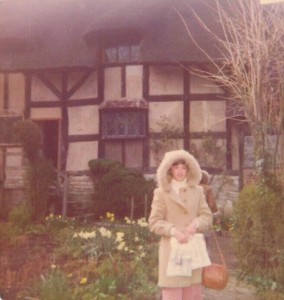
After our extended nap in Shakespeare’s theatre, we headed back to London. The last thing I remember about the trip was our group assembling the next morning on the sidewalk in front of King’s College, awaiting the bus that would take us to Gatwick Airport.
The long trip home has completely dropped from my memory, and in a way, I’m glad. In the years since, I’ve learned that going home requires far more time than getting wherever it is we’re going. It also demands vaster sums of patience and fortitude. But in my mind, I can skip right over all those tiresome hours of waiting and traveling. Suddenly, I’m my fourteen year old self, hugging my young parents in Atlanta’s as yet unremodeled Hartsfield Airport. Soon we’d be turning into our driveway, and I’d see that the azaleas were in full bloom. Daddy would be unlocking the door to the back hall, and my dog Popi would be waiting at the top of the stairs. I’d look into his eyes and know that he missed me. I’d drop my bag in my room and look around at the familiar surroundings of home. I would be completely happy. Happy to be home. And happy to know that one day, somehow or other, I’d get back to those far-away places that now seemed a little closer.
Most of us were not ready for this photo, taken outside King’s College, but we were ready to go home. Our remarkable teacher, Mrs. Correll, smiling at back left, is her usual cheerful self.
We miss her!
European Vacation, ’75: Part IV: Crossing the Channel
After our night at the lycée in Saint-Malo (See European Vacation ’75, Part III), our group was back on the bus early the next morning, heading to Le Havre and the Channel for our crossing to England. I was surprised at the size and relative luxury of the ferry; I guess I had been expecting something bare-bones and rudimentary. I hadn’t imagined that it might house several restaurants, shops and comfortable lounge areas. It was fortunate that it was roomy and fairly pleasant, as the crossing took over six hours. My friends and I wandered freely all over the boat, exploring every level.
When someone discovered a door that led outside, we stumbled upon a real thrill: the open decks. We had never felt such a fierce, strong wind. We were amazed that we could lean into the wind at a sharp angle and remain there, without falling. With the wind behind us, we could jump and be carried as though in flight. Luckily, no one sailed over the railings into the icy waters of the Channel.
After a while, when we began to feel the chill, we noticed two teenage boys hanging around farther down the deck. They were older than we were, probably around sixteen, and they weren’t involved in wind experiments. We could hear their English accents. Evidently this Channel crossing was old hat to them. They soon walked by, ostentatiously ignoring us, trying to appear caught up in their own conversation. When we returned inside, we saw that they remained near the door, still deeply immersed in their dialogue. We began once again to ramble throughout the ship, to see if the boys would follow us. They did. We conspicuously refused to acknowledge their presence, and they did the same to us, despite trailing us at a distance.
After a meandering circuit of the ship, the boys climbed the stairs to the observatory lounge. We remained on the level below. Not long afterwards, several younger English boys appeared. They looked to be about twelve or so. After much heated whispering among themselves, with frequent glances in our direction, they shyly approached. It didn’t take long for them to start firing off questions: How old were we? Where did we live? After each couple of inquiries they would dash upstairs to the observatory, only to return quickly with more questions.
The older boys, apparently, had opted to send in scouts on a reconnaissance mission. Once the younger boys had run through all the questions they could think of, they revealed their purpose. They had been sent to report that there were two “lads” on the upper level who would like to meet us. Due to their accents, we couldn’t at first decipher the word “lads.” Two whats? Lads? Oh, lads! How unbelievably quaint! None of us had ever before been pursued by a “lad!”
Nevertheless, we weren’t interested in the elder lads. They appeared overly serious and lacking in humor. Tall and gangly, they verged on being men. Although we were flattered by the attention, we knew we had no business flirting with men, or almost-men. Looking back, I wonder at their interest in us, several goofy, wind-blown fourteen year olds. Maybe our American-ness gave us some cachet.
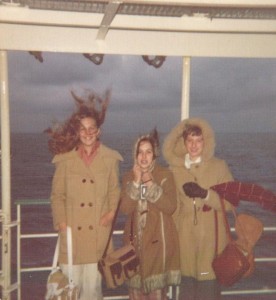
The younger lads, though, were an altogether different type: funny, cute, spunky, sweet, smaller than we were, and non-threatening. Their Englishness was simultaneously exotic and reassuring. They reminded me of members of Fagin’s gang of urchins in the Disney movie, Oliver! We never went upstairs to meet the older boys, but spent considerable time chatting with the twelve-year olds. They told us they lived in Staffordshire and were returning from a school “holiday” in Normandy.
I talked primarily with a golden-haired, blue-eyed boy named Graeme Bailey. He gave me his address, which he wrote on a page torn from a small notebook. On the other side was his drawing of a soldier. The address was other-worldly and old-fashioned. It included only one number, and that was a single digit. In looks, in name (and its spelling), and in accent, Graeme was perfectly, enchantingly English. But because he was so open and approachable, before we said goodbye I felt as though I had known him for a long while.
That night, I wrote in my journal that this had been one of the best days of the trip, even though all we did was travel. As I remember, I was feeling rather elated, wide open to life’s possibilities. Before setting foot in Britain, I had met a quintessential English lad, one who took a friendly, cheerful interest in me.
I think I was beginning to grasp the transcendent power of travel. It’s a truly wonderful thing to experience first-hand the vastness and variety of our world’s natural and cultural beauty. This is certainly an adequate reason to roam the globe. But to me, the real power of travel is this: it reveals the depth and strength of the bonds that unite us as a human family. Custom, language, differences in physical appearance–these are simply thin layers of veneer, the candy coating on an M&M. No matter where we were born or where we live, we are more alike than different. This awareness equips us with a powerful force for living with compassion and understanding.
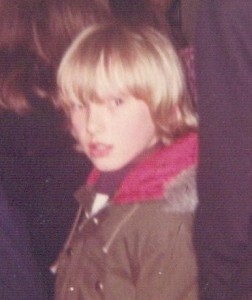
Escape to the Country, in Suburbia
One of the most appealing features of our little corner of Northern Virginia is the beauty of its landscape. It’s pleasantly hilly, interestingly rolling, never aggressively steep. Woodlands are interspersed with open fields, vestigial traces of the many farms that dotted the area in the last century. We consider ourselves fortunate to live in one of the last few surviving farmhouses. On their 200 acres, the original owners planted wheat and raised chickens. They had a small apple orchard and a sizable flower garden.
On the other side of the winding county road, where big fields sweep down to small lakes, some families still keep horses. There are charming little stables, grassy paddocks and old vine-covered wooden fences. When Kiko and I walk there, it’s hard to believe we’re in suburbia, a place I never expected to live. We cross the road, follow a short path through the woods, and we’re suddenly somewhere more remote. It’s almost like a quick trip through time and space to the countryside of my childhood at my grandparents’ farm in Kentucky. Early on a spring morning, it’s an especially satisfying escape.
Prayers for Boston, Prayers for our Country
It’s happened again. Another harrowing national tragedy. This time in Boston, during that city’s much-beloved marathon, on Massachusetts’ annual Patriot’s Day, a day of holiday and celebration.
More innocent lives were lost yesterday, April 15. More bodies were maimed, more souls damaged, more children left without a parent, more parents’ lives ravaged by the loss of a child. Another beautiful day in April, forever marked by catastrophe and sadness. Today is the six-year anniversary of the Virginia Tech shooting. This Friday, 18 years will have passed since the Oklahoma City bombing. As in the 1996 bombing at the Atlanta Olympics, a jubilant time in the life of a city has been twisted into ugliness, a blood-red-letter day of mourning. As in December’s horrific mass shooting in Newtown, Connecticut, children are among the victims. As on all these days and on September 11, those of us still standing are shakier, less steady.
Perhaps somewhat guiltily, we are relieved that it wasn’t our time. Not yet, at least. But we know it could easily have been us. It could happen to any of us. And increasingly often, it does. Our family was concerned, in particular, about friends from our church. The daughter was running the marathon, and her parents were there to cheer her on. Luckily, she is young, strong and very fast. We learned through Facebook that the family was unhurt physically.
Now, as a nation, we will pause. We will mourn. Many of us will pray. We may find ourselves at a loss for how to proceed. But then, as we always do after such calamities, we will rally. We will come together in love and support of those who died, of those runners now missing limbs, of those who have lost loved ones, of those who will assist friends and family as they face years of surgery and difficult recovery. We will stand up and say that we refuse to get used to this. We refuse to accept such violence as the natural order of things. And through our shared strength and determination, we will show that no matter what, the power of goodness will win out over evil. Immediate proof of this is demonstrated by the many people who stepped in, selflessly and heroically, to do everything they could to help injured strangers.
My prayers will continue to go out for all those impacted by this tragedy, and for all Bostonians, who, I would imagine, take personally this despicable strike against their hometown.
European Vacation, ’75: Part III: A Near-Adventure at the Lycée Jacques-Cartier
That night, of course, none of us was in the mood for sleep; the camp-like living quarters spoke to the fundamental need for teenagers to indulge in late-night antics. Our Chickamauga roommates seemed to have forgotten their animosity toward us after the bus incident, and we gained a new appreciation for them. They entertained the crowd with comically rendered country songs, liberally borrowing from episodes of the TV show Hee-Haw. My friends and I considered ourselves too cosmopolitan to admit to watching that show, but we had to say that the Chickamaugans could have starred in it. They had the requisite country twangs, the goofy, expansive personalities, and they really sang well together.
After the North Georgians had concluded their performance, Jackie and I joined Katie and Rebecca in the room they shared with other friends from our school. We were engaged in some sort of forgotten silliness when one of us happened to look out the window and notice several boys hanging around outside. We didn’t know them; they were evidently French locals. This was an unexpected and exciting development. My memory of what follows is hazy, and my journal, surprisingly, doesn’t record the details. My guess is that windows were opened, and intercultural flirting began. The boys felt sufficiently encouraged that they tried to scale the building and climb in the windows. Seems like I remember one of them standing on a portion of the lower roof. When it looked like they were really planning to storm the barricades, our group tried to backtrack. We didn’t really plan to invite them in. How do you say Never mind in French? I assume we locked the windows and hissed Arretez! Allez-vous! Va t’en! The commotion awakened one of our chaperones. She addressed the boys with severe words, the gist of which was unmistakable no matter the language. After they had retreated and disappeared, she treated us to similarly severe words and herded us back to our little beds.
Although Jackie and I returned to our room, we still had no intention of sleeping. We sneaked off quietly to the expansive bathrooms, hoping for further distraction. To our delight, we found a couple of forgotten bras hanging on hooks outside the shower stalls. They were for full-figured girls, unlike us, and made for ideal comic props. Whatever we did with those bras (and I can’t remember), it was the height of middle-school hilarity. It must have been near 3 AM when we returned to our cubicle. I had never been to sleep-away summer camp, and I never would go, but that night, I got an exhilarating taste of it.
It was Jackie’s birthday yesterday. After all these years, when we get together, we still tend to stay up late, talking and laughing. The difference is that today, we catch up on the current events of our lives while also reveling in so much shared history. It’s one of the nicer things about growing older. It makes the present moment all the sweeter.
European Vacation, ’75: Part I: Paris
Yesterday, our daughter went to New York City on a whirlwind, 24-hour trip with her drama class. The group left from the school by bus at 5 AM, and returned at 5 AM this morning. They saw two Broadway shows–Newsies and the eagerly awaited Matilda, still in previews. A Newsies cast member led the kids in a dance workshop. They had some free time, so I’m expecting a a full report on wandering Times Square characters. Are the Naked Cowboys in season yet? Were there plentiful sightings of Elmo, Shrek, Hello Kitty, Grandma Liberty and the Tin Man? How was the singing waitstaff at Ellen’s Stardust Diner? D is still asleep, so I haven’t heard the details of the trip yet. I’m very grateful to the drama teacher and to the parent chaperones accompanying the group. I’m especially thankful that I was not among them. While I enjoy New York in small, metered doses, I’m relieved that crowded, pre-dawn bus rides are predominantly in my past.
As D was preparing for the excursion that launched her spring break, I was recalling the days when I looked forward to my own eighth-grade adventure. I mentioned in an earlier post that I had the unlikely good fortune to participate in a school trip to France and England. (See A Small Reunion of the Rutherford Hall Gang, Nov. 2011.) As I said then, it was a rare event for a group from the Atlanta Public City Schools to venture anywhere for spring break in the 70s, much less to Europe. It was just about unheard of then for middle-schoolers in our area to take part in such study trips. But we were blessed with a dynamic and unusually dedicated French teacher, Martha Elizabeth Correll. She decided we must see France, and we must see it with her. We loved and admired the young, fun and charismatic Mrs. Correll. She seemed to be fond of us, too. She found a bargain-priced trip through the now extinct Foreign Study League. Nine of us, including several of my best friends, managed to persuade our parents that this was an opportunity not to be missed.
Mrs. Correll encouraged us to keep a journal during our trip, and naturally I saved mine. In my first entry, dated a few days before our departure, I mentioned my vague fear of flying. I had never been on a plane before: It couldn’t be especially frightening, could it? Katie, who wouldn’t ride the roller coasters at Six Flags, had flown before, and she wasn’t scared.
Above, most of our group at the Atlanta Airport, ready to board the plane to New York. Several of us hold our blue and white Foreign Study League carry-ons. Our teacher, Mrs. Correll, is at the far right, in her signature, whimsically decorated bell-bottom jeans.
My journal from the actual trip continues on the subject of airplane travel. The flights were unexpectedly smooth, I reported. Apparently I was expecting a roller coaster experience, despite Katie’s evidence to the contrary. But every aspect of flying was novel and amazing, if not particularly enjoyable. I wrote at length about the unbelievably cramped quarters on the overseas flight, the tiny bathrooms, and the unidentifiable food (my friend Jackie maintained that we had been served baked rat).
After a sleepless night on the plane, we arrived in Paris in the gray dawn and boarded our bus for an introductory tour of the city. I recall powerfully the miserable war I waged against my leaden eyelids during my first, much anticipated hour in a foreign country. We were surrounded by legendary sights, yet the yearning for sleep was overwhelming. After the discomfort of the airplane seats, the tour bus provided an ideal environment for snoozing. Most eyes were closing, most heads were bobbing. Mrs. Correll, ever vivacious, walked the aisle, rousing us. She hadn’t taken us with her to France so we could sleep on a bus. Once in the heart of Paris, I shook off some of the muddled fog of half-sleep. After stops at the Eiffel Tower and Notre-Dame, nearly everyone was awake enough to feel rejuvenated by our surroundings. Avoiding sleep became even easier once we noticed that our Parisian guide, Salvador, was charming and exotically handsome (so French!).
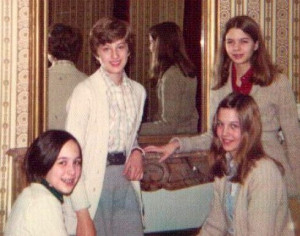
Because my expectations had been low, our hotel was a pleasant surprise. It had one of those old-fashioned elevators I had seen in movies, with a folding iron grille in place of a door. Our room was almost grand, if slightly faded. I liked its high ceilings, ornate wallpaper and elegant fireplace. Its large size was fortunate, considering there were five of us in it. Katie and Rebecca shared one double bed, Jackie and her mother shared the other, and I got the single. I remember being cold at night and sleeping huddled under my coat. We had been told not to expect a private bathroom, so we were surprised to find a spacious one with lavatory, bathtub and bidet. The toilettes, as we learned to say, were down the hall, in claustrophobic compartments. One of our friends went in one and couldn’t get out. He was finally extricated by a team of chamber maids speaking in baffling, rapid-fire French. After that, we were all careful about locking the door just so.
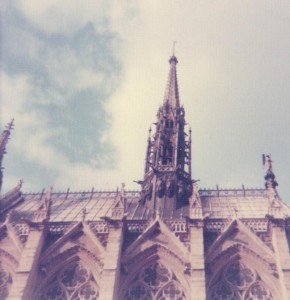
Our three-day visit to Paris was like a fast-paced tasting menu of the city’s highlights, most of which Mrs. Correll had discussed with us previously in vivid detail. She wanted us to understand and appreciate the history and culture of France, as well as its language. Paris came alive for us during that short time because our teacher had prepared us well. We heard some of the Easter mass in Notre-Dame. We saw the forbidding Conciergerie, where Marie Antoinette spent her sad last days. We beheld the lovely Sainte-Chapelle, the Gothic jewelbox that Saint Louis built to house the Crown of Thorns. We wandered the Latin Quarter, alive with bohemian student activity. We explored the courtyards of the Sorbonne, where Mrs. Correll had studied.
We watched old soldiers playing boules outside Les Invalides, fishermen casting their nets from the Pont Neuf, and children sailing paper boats in the Luxembourg Gardens. Everywhere there were Frenchmen carrying baguettes and wearing actual berets. We spent some time (not nearly enough for me) in the Louvre. Of course we walked the Champs-Elysees. We cruised the Seine at night in a Bateau Mouche. I got to witness first-hand the view I had most anticipated–the tip of the Île de la Cité with the lacy spires and flying buttresses of Notre-Dame just behind.
I loved the wealth of intricately decorated Easter candies and pastries that beckoned from the windows of small shops on narrow streets. Never before had fruit and vegetables looked so beguiling as they did in the city’s outdoor markets. Even displays in butcher shop windows were strangely beautiful, recalling old-master still lifes. We ate in cafés and brasseries, and learned that a croque-monsier, an omelette, or anything with frîtes was a good choice. We learned that French ice cream is served in minuscule metal dishes. And we found that paying for our meals and managing francs and centîmes was as difficult as we had feared.
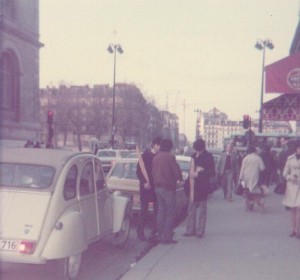
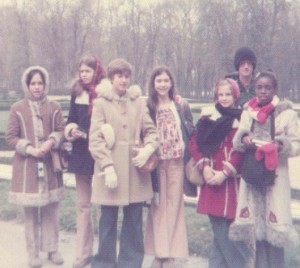
We were busy during our three days in Paris. But we weren’t so busy that we missed getting a sense of the city’s unique, ebullient, quirky atmosphere. Sooner than we would have liked, it was time to head to Normandy, to Mont-St-Michel, and on across the Channel to England.
Historic Angelica, New York
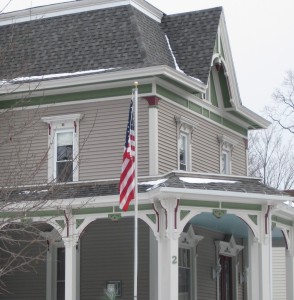
If you ever find yourself in western New York, perhaps after fulfilling a quest for authentic maple syrup at Cartwright’s Maple Tree Inn, I would recommend another stop in the nearby historic village of Angelica. (While Cartwright’s has an Angelica address, it is several miles outside the tiny town.)
Postcard-pretty Angelica was named for Angelica Shuyler Church (1756- 1814), scion of two eminent New York families, the Schuylers and the Rensselaers. Angelica’s father was a general in the Continental Army, later a member of the Continental Congress and a U.S. senator. Her brother-in-law was Alexander Hamilton. After eloping with the English-born merchant John Barker Church, Angelica lived most of her life in Europe. Intelligent, well-educated, charming and beautiful, she mixed in elite circles. During her years in Paris, her confidants included Benjamin Franklin, Thomas Jefferson (with whom she kept up a lifelong correspondence), and the Marquis de Lafayette. Her London acquaintances were equally renowned. Angelica and her family returned to America for a visit to attend the inauguration of George Washington.
When her family purchased a 100,000-acre tract of land in the wilds of western New York, Angelica’s son Philip scouted the area for a suitable location to build a town. He chose a site along the Genesee River. In 1802, he named the new settlement after his mother. Thanks to Philip and his surveyor, the town has a pleasing geometric plan, its main street radiating out from a central circular park.
Considering the name of the town and that of its founding family, it’s appropriate that Angelica is notable for the many lovely old churches that ring the green and dot Main Street. Nearly all the town’s buildings date from the 19th century and have been little changed. Modernism sidestepped Angelica. Large, still beautiful homes, plus a library, academy, court house and post office, are interspersed among the churches and shops. We typically visit in February, when the view from the snow-covered central park recalls a tabletop Christmas display of quaint ceramic buildings.
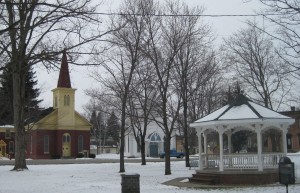
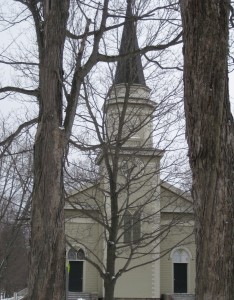
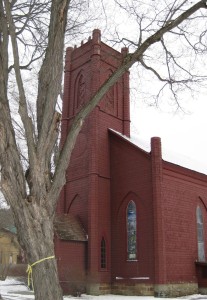
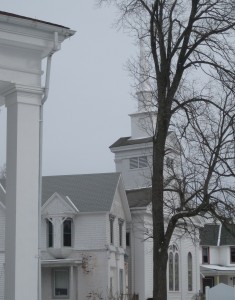
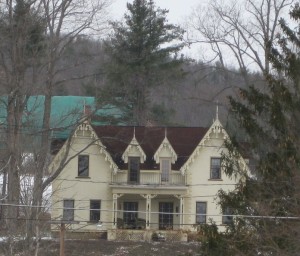
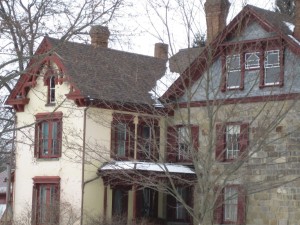
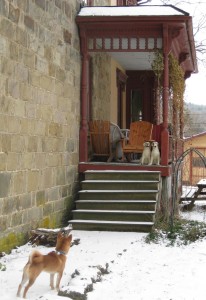
In 1797, Angelica and her husband returned to live permanently in the U.S. Their grand home, known as Villa Belvidere, is located on the outskirts of town. Begun in 1806, its design is attributed to Benjamin Latrobe, architect of the U.S. capitol. The house remains in private hands.

